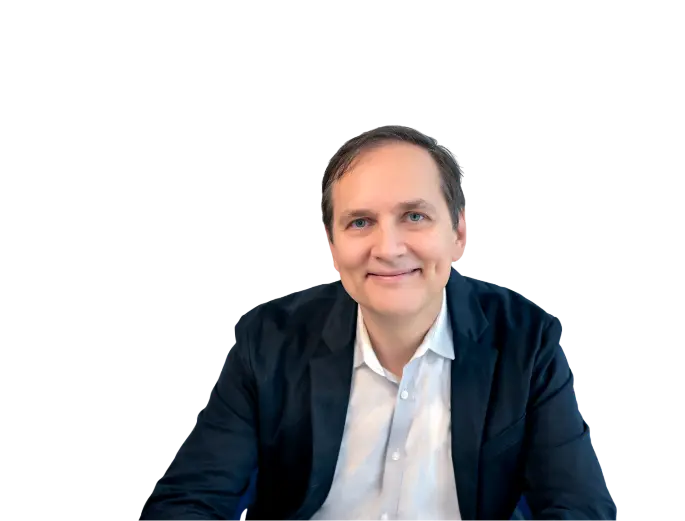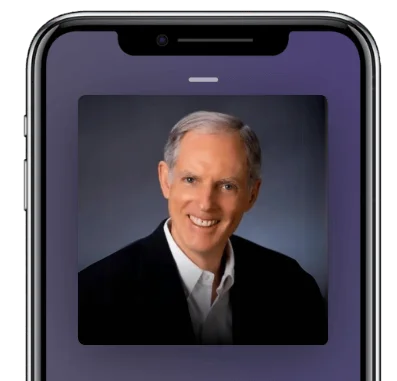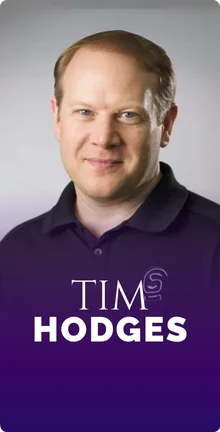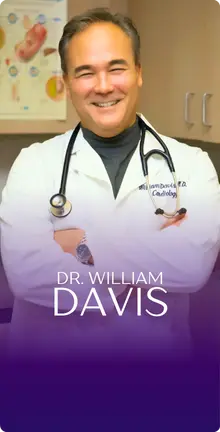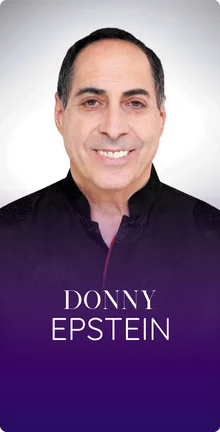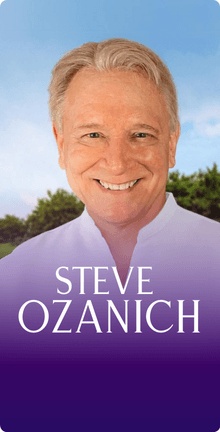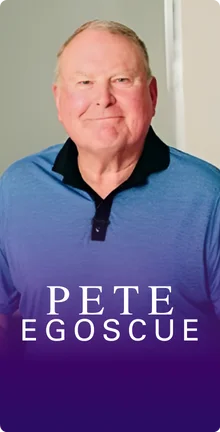In this Episode
- [00:38]Stephan introduces Dr. Barry Gillespie who discovered the Craniosacral Fascial System.
- [01:52]Dr. Barry’s story on how he discovered Craniosacral Fascial Therapy.
- [06:52]Dr. Barry explains how a C-section delivery can end up having a tight baby who may need Craniosacral Fascial Therapy.
- [11:17]What is a TMJ (temporomandibular joint) and what causes it?
- [19:03]Dr. Barry explains the process of how to diagnose a certain body pain or a TMJ issue and to determine its root cause.
- [25:10]What is Atlas Realignment Therapy and how is it related to Scoliosis?
- [31:08]Dr. Barry shares how Craniosacral Fascial Therapy can positively impact children with autism.
- [34:25]Dr. Barry reveals that it is never too late to try Craniosacral Fascial Therapy based on what Stephan shared in his situation.
- [39:42]Is Chiropractic, Acupuncture, and Osteopathic manipulation complimentary with Dr. Barry’s therapy?
- [46:02]Visit www.gillespieapproach.com to learn more about Dr. Barry Gillespie’s therapy and visit their Facebook group Gillespie Approach to inquire for a nearby practitioner’s help.
Dr. Gillespie, great to have you on the show. Thanks for joining us.
Thank you for having me on the show.
First of all, let’s talk about how did you get into this whole discipline of craniosacral fascial therapy. You weren’t just born into it. Somehow, you had some defining events that brought you into this particular area of focus.
I did have a defining event. I graduated from my surgical residency in 1975. Then, I opened my periodontal practice and I thought life was very good until I started getting headaches and it wouldn’t go away. I went to my medical friends, and they did a lot of conventional testing. After a number of months, they threw their hands up and said, “We can’t help you. It’s probably the stress of opening a business, opening your practice.” That wasn’t to be the case and my head still hurt.
After a while, your friends can’t help you in the medical model. Your head hurts and you start to look in the alternative world, which I had no clue. I heard about this thing called cranial, craniosacral. When I heard about it, I thought it was witchcraft. I thought it was voodoo. I thought it wasn’t going to work. It was going to be a waste of time and everything. There were a lot of EO there. I was in the medical model, but I had headaches, so I’ll give it a try. It doesn’t look like it’s going to hurt anything. I’m going to probably be okay. I’ll still have my headaches afterward.
I discovered that pediatric asthma was a disease of tightness in the fascia of the respiratory system.
Then I started getting treatments. My headaches started going away and my sinuses started to open up really well. I was hooked. I started looking at it a little further and got into it. I started looking at my patients who had TMJ problems. They had headaches and neck aches. I said, “Gee, maybe this can be incorporated into what I can do as a periodontist for the people who have these types of problems.” It did. This type of therapy really accelerated healing. People got better faster. It was a great thing. We just took off from there. That was around the late 70s, 1980.
Then I started getting into fascial work, that connective tissue work. Then, I found that was really good for children. Especially for children who had asthma. What I did was I worked on my first asthma child, and he got better. I wasn’t even sure why he even got better. As I saw a number of fascia asthma kids over a series of years, I discovered that pediatric asthma was a disease of tightness in the fascia of the respiratory system.
Somewhere in their diaphragm, somewhere in their lungs, somewhere in their tracheobronchial tree, somewhere in their throat, in their nasopharyngeal sinuses, they’re tight. There was some type of trauma, and their bodies got tight, and their respiratory system didn’t work that well. That was really an eye-opener for me.
Later on, in 2003, I was invited to join the Family Hope Center, which is a brain-injury center. I found out a lot of those children, the children with cerebral palsy, epilepsy, the brain-injured type of autism had a lot of pressure around their brain. Their brain couldn’t really expand and contract as a normal brain would, and it was a big part of their problem. In 2006, we were introduced into the Amish and Mennonites communities in Lancaster where they were interested in working on their babies. Over six years, we saw about 500 or 600 babies there, and we worked on them. That’s where the discoveries came.
Craniosacral Fascial Therapy (CFT) is a very gentle, natural approach with powerful therapeutic effects. It is based on his theory that the Craniosacral and Fascial systems are not separate but one interconnected system. Share on XWe went to Mexico, and we worked on about 80 or 100 babies in Mexico. We trained about 16 doctors. As we train around the country, we’re working on babies. We found that what we do is pretty unique. It’s universal. Since then, we train people in the United Kingdom and in South Africa. We found out that the therapy works in the United Kingdom, it works in South Africa, and it works for the babies.
Pretty much, Stephan, this is a universal message that babies are tight. What we see is—at least with the babies—there is soft tissue trauma during those 40 weeks. Something happens during delivery. There may be a vacuum suction. There may be forceps. There may be an umbilical cord wrapped around the body or around the throat. There may be shoulder dystocia.
Something happened in the labor. There may have been a long labor, there may be a lot of pressure in the labor. There may have been something that happened in utero where the fetus got stuck. They got stuck in a position that the fascia got tight and twisted. It was okay when you’re in utero but when you were born, it doesn’t work. It creates a lot of strain in the body. Basically, the bottom line of what we do with infants is that because of this trauma and the soft tissue strain, your baby is born tight. That’s what we see at birth.
Even if you have a surgical delivery via C-section, you can end up having a tight baby who needs to have this craniosacral fascial therapy to help them?
We thought most of the problems would be during delivery and during labor, but we found quite a few of the babies have problems during the fetal experience.
Right. There could be a lot of pressure in utero. There could be a lot of tightness in there. Maybe it got stuck. Maybe there were fibroids in there. Maybe the cord was wrapped. Maybe the mother’s uterus was tight, you couldn’t expand or contract. Things are just generally tight in the area and it creates a problem,
When we were with the Amish and the Mennonites, most of the babies had a home birth and very few were delivered in a hospital. But the babies that were born in hospitals, they still had the tightness. They had the plagiocephaly, they had the torticollis, they had the twisted heads, and they had all the fussiness issues, so it’s unexpected. We thought most of the problems would be during delivery and during labor, but we found quite a few of the babies have problems during the fetal experience. Somehow they got stuck and they got tight.
Got you. My baby, who’s now seven months old, was a breech baby, and we were going to try and have him born vaginally at home with the only doctor in the area that does vaginal breech at-home deliveries. He was out of network, obviously, and considered anathema by the traditional medical establishment. This doctor was amazing, and he got incredible outcomes for the babies and so forth. Problem was, our baby did not descend. My wife’s going through labor and labor, and he’s not descending. She’s fully dilated, and the water doesn’t break, he doesn’t descend. Eventually, we have to go to the hospital and get a C-section.
I understand.
Which was not fun. Especially when you’ve invested so much in having a calm, beautiful, at-home delivery. All that planning and preparation right out the window, it didn’t go through. We had Hypnobabies training so that she could use hypnosis instead of using drugs, and boy, we were so prepared. All of it for naught. It’s very frustrating.
I’m hearing the same story that my wife and I went through in 1973 when we had our first. At that time, we did Lamaze, natural birth, breathing, the whole nine yards, went to the hospital, and it just didn’t happen. Our first was breech. The doctor said, “Your baby may get caught in there,” the head and all the breech issues. So my wife ended up having a C-section reluctantly. It’s the same story, you just have to go with it and do the best you can.
Yeah, but now, we have an amazing, beautiful, happy, super-smart baby. We are very blessed.
That’s great.

What brought us to find out about and to have exposure to an actual experience with CFT or craniosacral fascial therapy with our little one was the plagiocephaly. For those listeners who don’t know what that is, that’s flathead syndrome. When the Back to Sleep campaign was really out in the media, and still a very important part of SIDS prevention, one of the side effects of this is babies end up having a very flat head in the back because they’re sleeping only on their backs. Our little one was getting that, and CFT seemed to be a potential treatment of that.
Before we go too deep into babies and stuff, I want to make sure that our listeners understand that this is not just for babies. CFT is for everybody. I’ve had CFT treatments myself. My wife had CFT treatments as well. As you said, Dr. Gillespie, that was transformational. What you got in the early days before you even developed this whole Gillespie approach, you had these headaches that went away because of the craniosacral approach that you had tried.
Let’s talk a bit more about adult-related issues. We’ll come back to babies later. Let’s specifically jump into issues with TMJ, and what that means, and things like clenching—I do this at night. I clench and grind at night. I wear a retainer because I had braces 10 years ago. I still wear a retainer to make sure that my teeth don’t go back to the wonky places. That promotes the grinding and clenching, so I’m curious to hear more about CFT and those scenarios.
Those nerve endings, if things aren’t happy around them, can become tight and you can develop pain.
The typical adult comes to me, Stephan, with pain. They usually have a headache. They could have a migraine, they could have a cluster headache, they could have a tension headache, they could have a TMJ headache, or their jaws are tight, or their bite may be misaligned, there may be some strain in their jaw. A lot of people come with neck aches, so they have upper backaches, they have shoulder pain, they have a mid-back tightness, low-back, their knee, or someplace in their body, there’s some pain somewhere.
Usually, they just come in, and it’s pretty chronic. It’s been there for a number of years. Sometimes, they can trace it back to an accident, “Yeah, I had a car accident,” or “I got whiplashed” or “I had a bad fall and it started from then.” A lot of people don’t have a real reason, and you go back into their history and they said, “Yeah, I used to have headaches in high school, junior high, and sixth grade.”
As soon as I hear that, I’m thinking about birth trauma. You’ve probably had it your whole life. There’s been something straining your body, and now, you’re 42 years old and you have headaches, and we’re going to work that strain out of your body where the connective tissue or the fascia is tight in your body, and it creates restriction around the free nerve endings. Those nerve endings, if things aren’t happy around them, can become tight and you can develop pain. That’s where people have pain.
I could almost say that there’s a strong possibility that any listener to this right now, if you have pain anywhere in your body whether it’s your head, your neck, your trunk, your appendages, anywhere, that there’s probably a fascial component. There’s tight fascia in that area putting pressure around nerves, which is creating some of that pain.
Let’s distinguish this for our listeners because they probably know that they should get massages, and they might have tight muscles, but the fascia and the relationship with the muscles, and the joints, and all that, that’s very important to understand. Because if they’re addressing just the musculature without addressing the fascia, they’re not solving the problem.
Exactly. You’re in half the equation. I know a massage therapist, which I am, I’m part of the equation. The muscle work is great. A lot of people get muscle work, but it really doesn’t address the fascial strain in the tissue. Just to go a little bit into cytology. If you take a muscle cell, which is about the size of a hair, if you realize that there’s a fascial layering like saran wrap around each muscle cell, and you put a number of muscle cells together into a bundle, and there’s another fascial layering around that, you take a whole muscle, and there’s another fascial layering around that.
People talk about muscles, and I’ll talk about the part of it is a muscular tissue and the other part is fascial tissue. That fascial tissue can get strained in an accident. Yes, if you have a massage, that the muscles will respond nicely, but you’ll probably have that fascial strain that’s with you, and you need to have that fascia addressed.
If you look at the typical medical model, we have doctors and specialists. There's a specialist for basically everything, but that's not the case with the fascial web. Share on XIt doesn’t just go away on its own.
Usually, it doesn’t. Sometimes, I thought about it. If the trauma’s not too severe, the body may heal it on its own. But if you’ve had a blow to the head, if you’ve had a concussion, if you had a sports injury, if you had old football injuries, if you were a cheerleader and you fell, or if you’ve had car accidents, you fell down, any type like this, that fascial strain is probably going to be imprinted into your fascial web. That needs to be looked at, addressed, and released in therapy.
Because if you get one part of your fascia being tight and not letting go, you are going to end up with pains in other parts of your body because it is disrupting the web of that fascial network.
Exactly. Your TMJ, your headache, maybe starting in your back, or your low back or your pelvic area. We hear those as mothers and say, “I didn’t know I had headaches until I had my first child,” when there was a lot of pelvic trauma and the sacral part of the craniosacral got tight. Over a period of time, it’s like a grapevine that goes all the way up into the back, into the head, and everything gets tight. I start developing headaches and eye problems. I have fogginess and I can’t think that well. Everything in your body gets tight.
If you have fascia, you can get tight. Tightness is cumulative. It doesn’t go away and it builds up over a period of time.
Basically, Stephan, I see tight people. If you have fascia, you can get tight. Tightness is cumulative. It doesn’t go away and it builds up over a period of time. When you become older, things get tighter, you get more pain, and that’s part of the craniosacral fascial system. It’s just getting bound down, it’s just getting tight, and you need therapy to help free it up.
Got you. How many therapy sessions would be typical? Is this something wherein one or two sessions it can be solved? Or is this something where you need ongoing therapy sessions like you go in for a massage every couple of weeks and you do that forever because you keep straining your muscles and you end up needing that?
Basically, it’s a series of visits, Stephan. Usually, on the first visit, I usually set an hour aside. We do an evaluation. We do treatment. I’ll do a treatment for an adult, or a child, or an infant. People will see what it’s like, and afterward, they’ll say, “Gee, I feel a little bit lighter, a little looser. I feel a little bit better.” They decide, “Yeah, I’ll continue,” or “I don’t want to continue.” Usually, it takes a series of visits.
The thing is, what we’re dealing with is getting to the cause of the problem, getting to the root of the problem. I tell my students, “It’s a terrible business,” because most medical people in their management business where they’ll manage the problem, they’ll manage the headaches with medications or drugs. You keep taking the drugs basically for the rest of your lives. It’s a nice business, but what we do is try to get to the cause or the root of the problem. Once you’re corrected, you’re pretty much done.
Usually, I don’t see people too much afterward unless you had another accident, or if the child has a sport’s injury, or the baby has had some type of trauma. That’s usually the way it goes. There’s really no check-up visits. By that time, the person or the parent really knows that if there’s a trauma for my child, or myself, or my baby, we’ll go back for a check-up visit, but otherwise, it’s not really ongoing so to speak.
There’s no recurring revenue model there.
No, it’s terrible. It’s great for healing if you’re interested in healing. It’s all about healing, which is great, but it’s not a great business model.
It’s funny. Let’s say that somebody has an issue with lower back pain. How would you determine what the source is? Maybe it’s coming from a tweaked shoulder and the fascia is tight up there. Maybe it’s TMJ issues with the jaw. How do you diagnose where the issue is originating from?

I can’t really say on that first visit, Stephan, because I’m not sure where it’s originating. I can’t really tell. I can only tell when I call the onion. We’ve peeled a lot of layers, and now we’re down to the core and see what’s left. You might say the TMJ is the last thing that’s left, or the neck, or whatever, my shoulder, my lower back. This is the last thing that’s left, so I know we’re into the core issue that probably started and that’s where it’s going to end.
It’s really hard because everything is connected. A person might come in with a jaw problem and then they say, “My jaw feels better, but my neck is starting to hurt.” After another visit or two, “The neck is starting to clear out, but my back’s bothering me.” Then the back clears out, then, “It’s my low back is bothering me.” I have to explain this as you go along in therapy, so the patient understands how it all works. Going in and you’re trying to get authentic healing. You’re trying to release all the strain in the body that’s presenting itself.
A lot of times that people will have things that will happen to them or their child there’ll never even mention. They’ll be bedwetters and the mother won’t even mention it on the intake. The child will say, “Well, all of a sudden the bedwetting stopped.” I said, “Yeah, there’s a lot of strain down there in the pelvis, down there in that area of the body.” Once it was released, the bedwetting went away.
Amazing. There are a lot of seemingly disconnected issues, but you get to the root cause, as you said, and they all go away.
If you look at the typical medical model, which is good—we need doctors, we need specialists—there’s a specialist basically for everything. There’s an ophthalmologist, there’s an ENT, there’s the dentist, there’s a specialist for every part of the body. We don’t really look at it like that when we’re on the fascial web. All these organs, all these organ systems are all connected. You can’t separate them.
The organ systems are all connected. You can’t separate them.
It’s like aspen trees. They’re all connected in the root system.
Yeah. It’s like an energy field and it’s all connected. We do well with acupuncture people. People who are fascial work, and they’re getting the viridans opened up. Basically, we think that that’s a lot of fascia releasing in there, opening up the energy flow in the viridans. It’s all connected and it’s this whole fascial web that’s everything’s connected to, and nobody is really looking at it.
Interesting. I’ve had some exposure to another type of therapy, maybe it’s related. It goes by several different names like fascial counterstrain therapy, or strain counterstrain, or there’s probably another name, too, that I’m not thinking of.
There’s myofascial release, which people are familiar with.
How does that compare to your approach? To the Gillespie approach?
It’s very similar. The biggest approach is myofascial release, which is John Barnes, a physical therapist. He has trained over 100,000 therapists in America about this therapy. Most of the listeners are maybe familiar with myofascial release. What I did was I studied with John way back in the 80s, and I worked in his office for a number of years. We’re very close. What I found out was if you connect this craniosacral work, which I learned from the cranial osteopaths and Dr. Fryman back in the 70s, early 80s, and if you connect that back into this whole fascial web, and you start including all of the TMJ and the oropharyngeal work that I learned in periodontal and dental school, if you put all those together, you’re going to come up with something really great.
That’s how we came up with craniosacral fascial therapy. We’re addressing the craniosacral, the brain motion, you’re addressing the fascial web, the tightness, and you’re addressing a lot of the oral and pharyngeal work, which nobody really goes to in dentistry and TMJ. That’s how it all got started.
Interesting. It was Tim Hodges, who I’ve actually had on this podcast—very early episode. He’s a practitioner in fascial counterstrain. He worked a lot on my head. I don’t know. It’s hard to describe it. He just worked on the top of my head and it affected different parts of my body, which I guess was because of the connection with the fascia. Is that a pretty common thing? That seems like voodoo. I mean it worked if I felt better, but it was unheard of up until that point where I’ve never been exposed to anything where you do some manipulation to the top of somebody’s head and then it affects all these different parts of their body.
Right, it’s all connected. You can have a fascial strain in the trunk, the problem can be starting down there in the pelvis, or the low back, and it can be pulling up into the cranium. If you start with the cranium, that may start to release what that fascia web will lead you as the therapist down into the back and the low back, so you’ll have to address that also. It’s a full-body approach. It’s not a segmented approach.
The strain-counterstrain is very similar in role, like siblings. We all have a piece of the puzzle. We try to incorporate the whole body and when we work with children and especially with infants, you’ve got to send the pounder, you can get the whole body going and everything can start to open up and release at the same time.
The microbiome and the gut are the secondary brains. There's a connection in our work with the fascial web on the microbiome. Share on XGot you. There is something else I have heard of, but I haven’t experienced it. Somebody recommended it. It’s called AtlasPROfilax. It’s an adjustment of that first cervical vertebra, it’s a one-time thing. And for many of us, apparently, our atlas is misaligned, just takes one adjustment, and then you’re done. Have you heard about this?
Right. I think it can be very effective. I do send some people out for that type of therapy, for chiropractic. The babies who have torticollis, who have twisting in their neck, sometimes the adults have twisting in their neck, and they may have a head tilt where their head is still tilting to one side. I definitely have them, send them out to an osteopathic or chiropractic where they have C1 and the other C, it’s cervical vertebra checked.
But the thing is that, if you’re doing that type of therapy which is all great, you want to make sure the fascial strain around C1 is gone. You want to make sure the fascial strain around the cervical vertebrae is gone. You want that twist worked out of that cervical vertebra so that once C1 is in position, it will hold that position, the fascia isn’t going to pull it, twist it back into the original position. Otherwise, you’ll be going back to visit after visit after visit, which wasn’t intended.
Again, the fascia has another situation here where it’s part of chiropractic where the spine will hold this position, as long as the fascial web is pretty happy.
How does this relate to scoliosis?
Relates to scoliosis in that the muscles in the fascia will act on the spine and actually twist the spine. When I was 33, I started getting back problems and neck issues and I went to the chiropractor, and he said, “Oh, you have scoliosis. You’re 33. You’re done. You can’t do anything about it.” I’m the kind of person that if you tell me something can’t be done and it’s impossible, I will look into it and I’ll find a way. What I found was that the muscles and the fascia have a great effect on scoliosis. I had a lot of muscle work and I had some people work on fascia. It took a while, it took a number of years because I was late in life. I’m 73 now and my scoliosis is gone. It’s nice. When you’re 32, you never think about when you’re going to be in your 70s, but you want to be feeling pretty good. It’s a nice thing.
People have back problems their whole life because it wasn’t addressed at birth.
We wondered if scoliosis started with difficult birth when we saw the babies, when we worked on their backs. There’s a lot of twisting, pulling, and turning. If you see this over a number of visits with babies, is this what scoliosis is? If you leave this untreated? Is this what creates scoliosis, and kyphosis, and lordosis? Back problems, people have back problems their whole life because it wasn’t addressed at birth.
Is there a science to show that that’s the case or is that just a hypothesis.
There is no science. It’s just what I see in over 40 years. I’ve seen over a thousand babies, probably given over ten thousand baby treatments. It’s just what I’ve seen. There’s no medical hospital scientific randomized control double-blinded research to anything that we do. It’s just the way it is. If that’s the way the medical model is. But when you see it, after 100 babies and after you see it for 40-something years and it works, it works. That’s what got my interest in the work, my headache went away, I see it work patient after patient. The whole thing works.
Very exciting. What an amazing outcome for you to not have scoliosis now and not have the headaches and so forth. That’s great.
If I’d been a periodontist, I’d probably have retired when I was 60 and still have headaches, a lot of medication, and scoliosis, and would have a different story, but here I am. I’m happy.
Yeah. All the people that you’ve touched, all the babies who’ve grown up are happy and healthy now.
We’ve had teachers, we’ve had over a thousand students, and they’re out doing the works. It’s very exciting.
How many are certified?
We don’t have certification, we just teach people because a lot of people that come to my seminars are mothers, they have a child who has an issue, and they live not near Philadelphia, and still, they take the training. Or they have three or four children who all need therapy. We have mothers who take the therapy. It’s a very eclectic group. We have physicians, dentists, chiropractors, osteopaths, all types of therapists. Basically, it’s really difficult to certify people, we just train people, and they go out and just do the work according to their licensure.
Got you. Okay. Now you mentioned that children who had asthma or positively affected through this treatment, did you find that adults with asthma could also be positively impacted through this?
Somewhat, but there was a window of opportunity with the children, is because when you’re 5, 6, 7 years old, the histology of the respiratory tissue doesn’t change. When you become an adult and you’ve had it for 20 or 30 years, the histology of the lungs changes and you can get a result, but you’re probably not going to get 100%, but you can get enough words. It’s something to look into.

It can positively impact your quality of life.
Right.
Even if you’re older, got it.
Even if you’re older, yeah.
Okay. You mentioned autism.
We’ve seen at The Family Hope Center. We’ve seen the children are all autistic and one of their aspects is that there’s a lot of pressure in their head. Their brains are normally expanding and contracting. Their craniosacral is very tight. Their brain isn’t expanding and contracting. It takes a number of visits before the pressure in their neck, there should be a lot of fascial strain in the neck and the head. We can usually see it in over three or four visits and we start to get a brain cycle.
That’s a piece of the autistic spectrum correction. It’s not totally corrective, it’s helpful for some. Occasionally over 40 years, I’ve got 1 or 2 children, something happened when they came in for therapy and their autism went away. That story went on the internet, and all of a sudden, I got these calls and I had to tell people that that’s a rare exception. Usually, most children need a number of visits and it’s going to take other things to do.

Right. Like I learned, for example, that there is a connection to the gut and gut health for autistic children and they usually have gut problems. I recently interviewed Dr. William Davis, the author of the book Wheat Belly. We talked about this in the episode.
Right. The microbiome and the gut is actually the second brain. There’s a connection in our work with the fascial web of the microbiome. You see these babies who are constipated, these children are constipated where they have bowel issues, their fascia is tight in their intestinal area, they’re just tight.
I remember having severe problems with my gut. I had constipation when I was very young. Thankfully, it went away, but it was really serious. Back then, my parents and grandparents didn’t know what to do. They just didn’t do anything.
Right. Nobody knew. Right now, what we’re saying is that the fascia that connects the tissue in your trunk, your lower body, and your abdominal cavity, is tight around the intestines. Intestines need something that’s called peristalsis which is like a wave-like motion to keep the fecal matter going and keep it going so you could expel it. We believe that the fascia gets tight in the small intestine, large intestine, and this peristalsis decreases and everything gets stuck there. When it gets stuck there, you get constipated. We see that with the babies where the mother will come in and the mother will say, “My baby goes to the bathroom every five days.” The pediatrician said it was fine. “You’re breastfeeding and five days is fine.” In our world, it’s not. You need to go every day at least every other day. The fascia is tight in there.
It’s like the jet stream effect. Stops working, like countries like the UK get really cold and so forth, so that movement keeps everything working and when it doesn’t work, you have big problems. One thing that I’m just making a connection while we’re speaking, I remember my mother telling me, she passed away, but she had told me multiple times how hard her labor was with me. She was in 48-hour labor or something like that. That’s very long labor.
A labor is usually like seven or eight hours in America.
This is well over a day-long that she was laboring. She did have me vaginally, but I just wouldn’t come out. I’m curious if there is a connection there in terms of potential traumatic birth. I have really extreme tightness in my shoulders and in my neck. My neck is forward. I need to spend a lot of time on the computer and that doesn’t help for sure. But I have a real problem with my neck and head being too far forward. I’m curious if that long labor that my mother had contributed to a traumatic issue with my fascia.
It probably did. It probably predisposed you since it wasn’t addressed at birth. Nobody did anything and you grew up with it; here you are. It’s a kind of thing that, in my perfect world, if I was there at your birth and one of our students, we would have checked you, Stephan, when you were 10 minutes old. We’re after that five-minute Apgar score and you were good to go with the Apgar.
We would have said, “Hey mom, let’s just see if Stephan,” you probably wouldn’t have a name by then, “just to see if your baby’s tight.” And we would have found that you were tight and we wouldn’t have put a label on it because you’re only 10 minutes old, so we’re not going to give you a disease. We’re not going to say there’s a nursing issue or you have whatever you have torticollis or tightness. We’re just going to say you’re tight and we’re going to work out the strain in the first 10 minutes and you’re going to get your first treatment.
In my world, you have the next treatment the next hour and you’re going to be at the hospital for 24 hours. The nurses are there, the therapists are going to be there, somebody’s going to be checking you every hour.
By the time when you leave, Stephan, when you would have left the hospital on the second day, at the end of the second day, you would have been really loose. You would have been calm and relaxed. You would have been breathing well, nursing well, digesting well, pooping well, and napping well. You should have been a pretty happy baby. But that’s not the way it is in the world today. That’s what we want. The ultimate goal is to have birthing people check you when you’re minutes old to reverse that trauma that you’ve had in 40 weeks.
Pediatric Asthma is a disease of tightness of the fascia on the respiratory system. Share on XAnd yes, if your mother came in with you and said, “Hey, for Stephan, I had a 48-hour labor.” That’s a huge red flag, we don’t have to check, we’ll just go into therapy and see what’s here and you’re going to be tight. Maybe that neck issue, that shoulder issue was because you were tight at birth and nobody corrected it.
But it’s never too late, right?
It’s never too late.
So I get some relief.
Sure. That’s just how we see the world. Everybody sees the world differently, but since I’m in the work, I see it as a fascial web and what happens to your fascial web. What about all those traumas when you were kid, and the sports injuries, and you fell off your bike, and fell out of the tree, and fell down the stairs, and all that stuff inside of you and that makes you just a little bit tighter. That stuff needs to be worked through, too.
Yeah. I remember I was in third or fourth grade and I was pushing one of those metal merry go rounds really fast. I was trying to get that thing spinning fast and then I slipped and fell and hit my head. I think it’s the right temple. It was just a bloody mess. Right above my eyebrow. I don’t recall if I had to get stitches, I don’t think I did get stitches. There’s still a scar there. I’m sure that was a pretty traumatic thing to my biology, musculature, and fascia, too.
Right. I’m sure your mother took you to the hospital, you went to the emergency room, which you definitely should have done. You should go to the doctor and get checked and get the stitches or whatever medically you need, but that final step before you leave the hospital, “Hey, let’s check your brain motion, let’s check your craniosacral, let’s make sure your brain is moving nicely.” Most stories, most hospitals, that’s not done, or most medical offices, you leave with a really tight head and then you wonder why you have headaches, and you have cognitive issues, and you have reading issues, and you have problems at school, and you get tired a lot and your head’s tight, your brain can’t function like it normally should.
The body can heal itself. We’re just trying to help the body free itself up.
Right. Where does chiropractic and massage therapy fit in with this? Are those things that you would recommend adding to the mix here? Is that sometimes not really necessary if you address the fascial issues? And, is it something that you’d want to do on an on-going basis?
Chiropractic and osteopathic manipulation, and massage are very complimentary along with acupuncture, any sort of energy work. Things that we’re trying to find out where the strain is in the body, what’s tight, and we’re realizing the body can heal itself. We’re just trying to help the body free itself up. Yes, all of these can be very complementary.
Do you, for example, go to a chiropractor?
I don’t. I work with a chiropractor in the office, but I don’t. I usually get this type of work and get massage work and that usually helps me out if I need a problem. But I’m not against it. Chiropractor seems to be very helpful, especially if there’s a neck issue. Craniosacral fascial therapy has worked out all the strain, but the vertebra just aren’t lined up. Usually after CFT with an infant, you want to go to an osteopath or a chiropractor to make sure all the vertebrae are where they should be.
Got you. There’s a particular type of chiropractic, it’s not even chiropractic, it’s more like energy work. It’s called Network Chiropractic founded by Donny Epstein, who is an amazing human and he was also a guest on this podcast. I’m curious about what your familiarity is with Network?
We don’t have that much around in Philadelphia. I don’t see too many Network Chiropractic patients, so I can’t really speak about that. But I can be very positive about the whole experience. I’m sure it’s very complementary.
I’ve had multiple entrainments. That’s what they call these energetic adjustments. Really transformational. Not just physically, but spiritually. Even I’ve had some profound spiritual experiences through entrainments. You mentioned acupuncture. Are you somebody who goes to get acupuncture treatments, acupressure, or anything like that?
I don’t, but the number of people who come to me do. The chiropractors like to send patients to me because it freezes up their brain, it freezes up the brain motion which increases the chi, the energy, it releases the meridians around the body so the acupunctures team do get a better result when the fascia web is a lot looser and a lot freer.
When the brain is open, relaxed, and moving nicely, the cerebrospinal fluid is flowing nicely, this is what we want.
Okay. Now you mention the brain motion, is there some sort of Apgar test or anything for brain motion, some sort of medical score?
Yes. They create a baby brain score for when you’re born, we will check your brain motion. Your brain motion wants to be where your brain is fully expanding at least 50 seconds and fully contracting at least 50 seconds. Where this total brain cycles at least 100 seconds. Where the brain is open, the brain is relaxed, the brain is moving nicely, the cerebrospinal fluid is flowing nicely, this is what we want. Sometimes it shows a newborn very tight where there is a lot of pressure in our heads, there’s no expansion, there’s no contraction and they have zero second brain cycle. That doesn’t mean they are a vegetative child vegetative baby, they’re not comatose. It just means there’s just a lot of tightness, there’s a lot of pressure around the brain. Once you open it up, the brain will work better.
I didn’t realize that a baby’s brain pulsates like that.
It pulsates. It expands and contracts, and it’s very important for their neurology. What I found over 40 years is that most babies I work on, when they’re around 3 years old, they are usually pretty smart. They’ll start doing things that most 3-year olds aren’t. By the time they go to school, they’re too smart for school. They need to be in some special class, they’re bored with school and you’ll end up with hopefully smart kids. That’s what we found. Again, no scientific research on that, but that’s what we’ve seen over 40 years.
Are earaches also correlated?
We see the children who have earaches where the bones are out of alignment. The ear bones are tight and that creates the misalignment in there, and the fascia is tight. Once we release that, a lot of times the earaches will get a lot better. If they don’t what we found with the earache kids is that mucus-forming foods, dairy foods are a problem. The pizza, the ice cream, the dairy products are a problem with earaches. The child needs to clear out of the dairy.
A freely moving brain, spinal cord, and fascial web are all critical to optimal health. Share on XHow can you diagnose when that’s an issue.
I can’t really diagnose anything, but usually, I’ll tell the mother of the child with earaches, I’ll say, “Look, half of the children will get better with this therapy, the other half isn’t. I don’t know which half is going to get better. If your child gets better with the earaches, but there’s not a total 100% clear out, then you have to look at the mucus-forming food. The number one food is dairy food.”
Got you. Do you do an elimination diet?
I can’t tell the mothers what to do. I don’t tell any parent what to do, but I strongly suggest that. It’s interesting when we did our Amish research, we saw maybe 500 or 600 babies and almost all the babies sat well and some of the babies still had sinus issues and they had intestinal issues. We felt that dairy was a problem. I tried telling an Amish mother who runs a dairy farm that her baby shouldn’t have dairy in the breast milk. The mother had to get off dairy and some of the mothers did get off dairy and the babies did fine, the other didn’t. You only do what you can do.
Right. You’re just asking for them to make some behavior changes, and hopefully, that happens and then there is a positive outcome.
I’m a therapist, so I can’t diagnose anything. I can’t tell people what to do, but I make suggestions or recommendations, and people do what they want to do anyway.
Right. Got you. Now what if somebody wants to go to get some CFT or get their baby checked, is there a website or network of practitioners trained in CFT that can look up in a directory or anything?
We do have a website, it’s gillespieapproach.com, but I don’t have a directory on there because of legal liability reasons. But you can go to our Facebook group, Gillespie Approach Facebook Group. If you go on there and say, “Hey, I live in Salt Lake City or I live in Houston or I live in St. Louis, is anybody near me?” Then probably somebody will come up and say, “Yeah, I’m down the road.” If not, you can Google craniosacral fascia, craniosacral, fascia, myofascial, or any type of that and where you’re from, your zip code, and people will come up around you. But generally speaking, if you’re in pain, you want to think about fascia, fascial tightness, fascial restriction as at least part of your correction.
If you’re in LA like I am, you can go see Lauren Brim, who is awesome. I strongly encourage our listeners to go sign up for that Facebook Group and ask the community. How many people are in that Facebook Group?
There are 2900 people in there now.
That’s pretty good, nice.
It started pretty well. We started in 2011. One of my teachers, Kim Sherlock and Holly Steflik, told me to start this Facebook group in 2011. I had no idea what Facebook was. It has grown since then. I’m really excited about it.
That’s awesome. This was wonderful. Thank you so much, Dr. Gillespie. Again, listeners, go to gillespieapproach.com to learn more, to potentially end up going to the Facebook Group then and find a practitioner and who knows, maybe you had some lifetime benefits from this approach and this therapy. Thank you again. We’ll catch you on the next episode of Get Yourself Optimized. I’m your host, Stephan Spencer, signing off.

